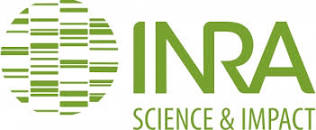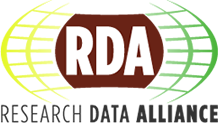Agricultural Experiments Ontology (AEO)
AEO is an ontology aimed to represent objects related to agricultural practices.

AEO is an ontology aimed to represent objects related to agricultural practices.

The Multi-scale Multi-step ontology (MS-O) is an ontology to describe transformation processes., Multi-scale Multi-step ontology (MS-O) est une ontologie permettant de d-crire des processus de transformation.

FALDO is the Feature Annotation Location Description Ontology. It is a simple ontology to describe sequence feature positions and regions as found in GFF3, DBBJ, EMBL, GenBank files, UniProt, and many other bioinformatics resources. The aim of this ontology is to describe the position of a sequence region or a feature. It does not aim to describe features or regions itself, but instead depends on resources such as the Sequence Ontology or the UniProt core ontolgy.

The Experimental Factor Ontology (EFO) provides a systematic description of many experimental variables available in EBI databases, and for projects such as the GWAS catalog. It combines parts of several biological ontologies, such as UBERON anatomy, ChEBI chemical compounds, and Cell Ontology. EFO is developed by the EMBL-EBI Samples, Phenotypes and Ontologies Team (SPOT). We also add terms for external users when requested.

Variation Ontology, VariO, is an ontology for standardized, systematic description of effects, consequences and mechanisms of variations. VariO allows unambiguous description of variation effects as well as computerized analyses over databases utilizing the ontology for annotation. VariO is a position specific ontology that can be used to describe effects of variations on DNA, RNA and/or protein level, whatever is appropriate.

An ontology that describes phenotypic traits in plants. Each trait is a distinguishable feature, characteristic, quality or phenotypic feature of a developing or mature plant.

ENVO is an ontology which represents knowledge about environments,environmental processes, ecosystems, habitats, and related entities

The Plant Ontology is a structured vocabulary and database resource that links plant anatomy, morphology and growth and development to plant genomics data.

ISO 37120 - Sustainable Development and Resilience of Communities - Indicators for City Services and Quality of Life (under TC268) http://ontology.eil.utoronto.ca/ISO37120.html. This OWL file defines a class for each indicator defined in the ISO 37120 standard. Names for each indicator are provided. Text definitions are provided only for Economy, Education and Energy indicators, due to copyright restrictions imposed by ISO. This file is meant to provide a single URI for each indicator. An ontology for representing an indicator's supporting data plus meta information such as provenance, validity and trust can be found in: http://ontology.eil.utoronto.ca/GCI/Foundation/GCI-Foundation.owl Documentation of the ontology can be found in: http://eil.utoronto.ca/smartcities/papers/GCI-Foundation-Ontology.pdf

ISO 21127:2014 establishes guidelines for the exchange of information between cultural heritage institutions. In simple terms, this can be defined as the information managed by museums, libraries, and archives. The intended scope of this ISO 21127:2014 is defined as the exchange and integration of heterogeneous scientific documentation relating to museum collections. This definition requires further elaboration.

This document specifies the structure of an ontology for a fine-grained description of the expressive power of corpus query languages (CQLs) in terms of search needs. The ontology consists of three interrelated taxonomies of concepts: the CQLF metamodel (a formalization of ISO24623-1); the expressive power taxonomy, which describes different facets of the expressive power of CQLs; and a taxonomy of CQLs. This document specifies: a) the taxonomy of the CQLF metamodel; b) the topmost layer of the expressive power taxonomy (whose concepts are called functionalities); c) the structure of the layers of the expressive power taxonomy and the relationships between them, in the form of subsumption assertions; d) the formalization of the linkage between the CQL taxonomy and the expressive power taxonomy, in the form of positive and negative conformance statements. This document does not define the entire contents of the ontology (see <a>Clause4</a>).

An ontology of cell types.
